
Royas
Cactus Rust Or Rust
Puccinia Sp.
Pathogen:
Fungus
Type:
Risk to the plant:
HIGH
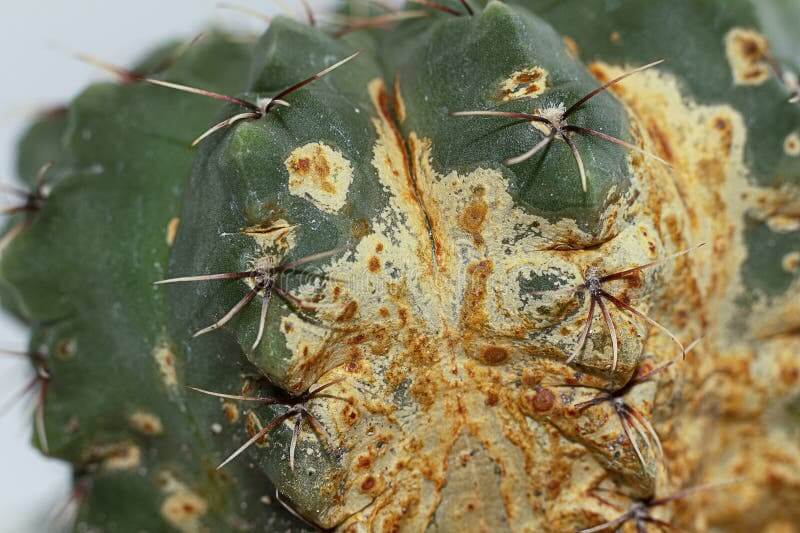
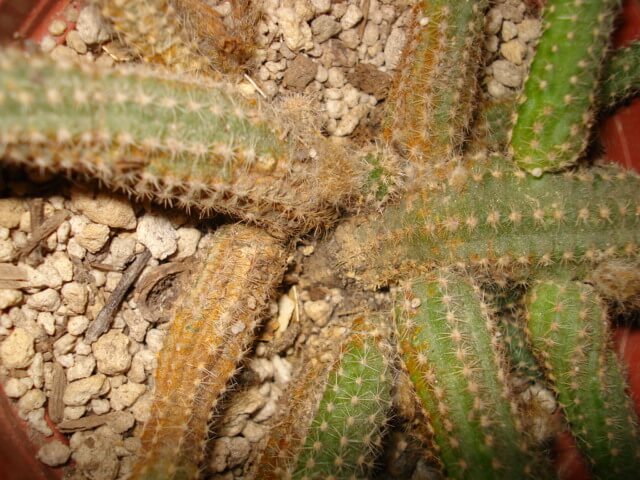

DESCRIPTION
WHO CAUSES IT?
The pathogen responsible for cactus rust belongs to a group of fungi known as rusts, which are highly specialized and parasitic on plants. These fungi develop by producing spores in different stages. First, the spores germinate and penetrate the cactus tissue through stomata or wounds. Once inside, they form haustoria that extract nutrients from the cactus cells, allowing the fungus to grow and reproduce. The new spores are then released and dispersed by wind or water, infecting other parts of the same cactus or nearby plants. This cycle can repeat several times during a growing season, especially under favorable environmental conditions such as high humidity and moderate temperatures.
SYMPTOMS
The disease caused by rust in the cactus manifests itself through various symptoms that affect both the appearance and general health of the plant. These symptoms include:
- Yellow Taches on the upper surfaces of the leaves.
- Orange or brown pustules on the lower surfaces of the leaves.
- Deformation and necrosis of the affected leaves.
- Premature fall of leaves.
- Reduction in the general vigor of the plant.
- Lower photosynthetic capacity due to the loss of leaves.
- Appearance of necrotic areas on stems and fruits.
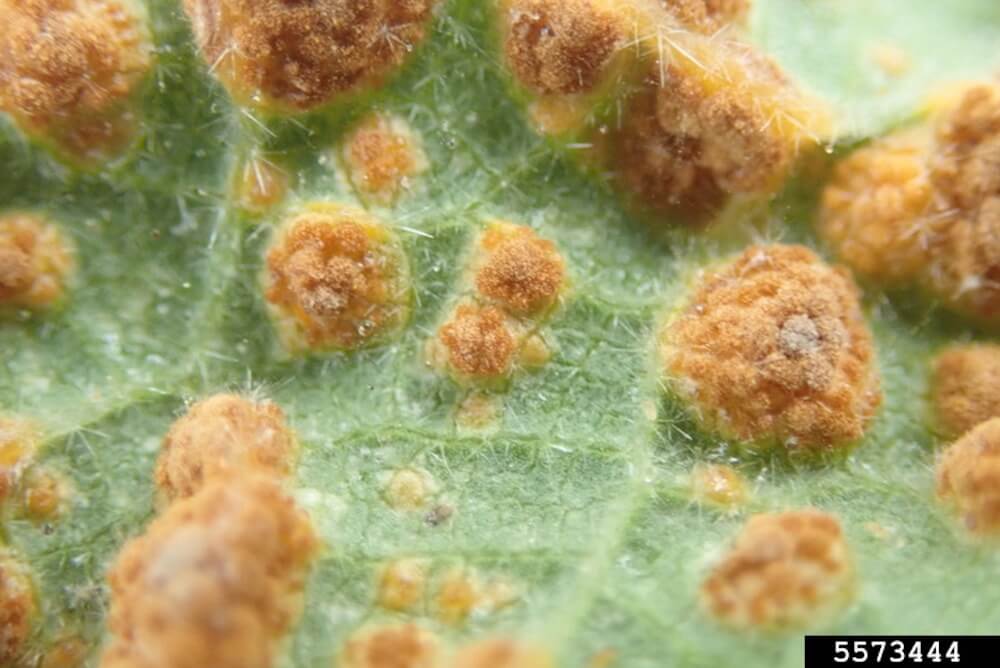
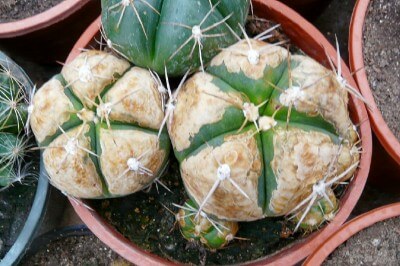
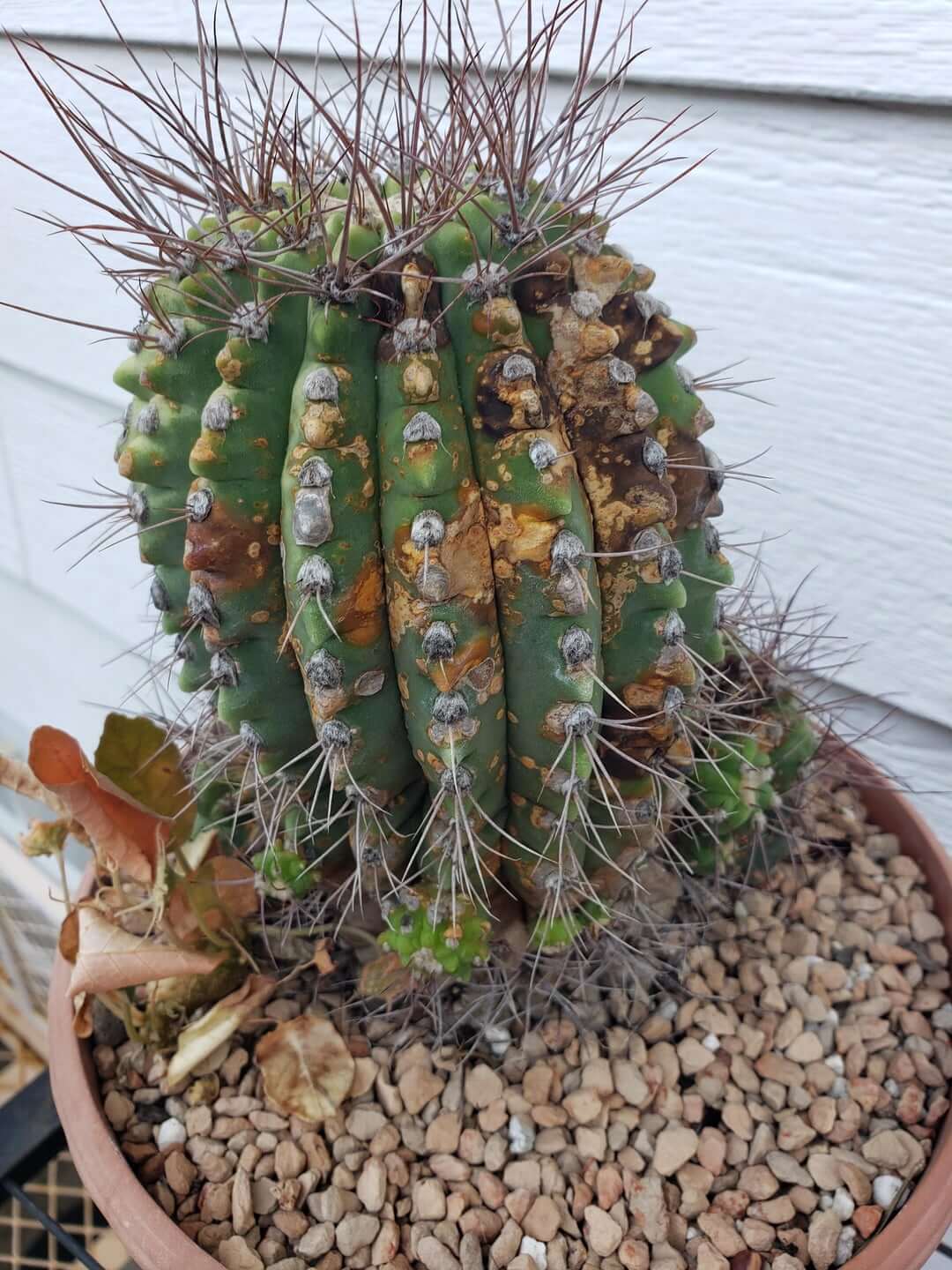

TEMPERATURE AND HUMIDITY
15°C - 25°C
70% - 90%

HOW IS IT SPREAD?
Wind, water, contaminated tools, direct contact with infected plants, insect vectors, spores carried by animals, dispersal through soil

HOW TO REMOVE IT?
Home remedies
There are no home treatments
Chemical treatments
• AZOXISTROBIN 25% [SC] P/V
• DIFENOCONAZOLE 25% [EC] P/V
• CUPRIC HYDROXIDE 50% (EXPR. IN CU) [WP] P/P
• COPPER OXYCHLORIDE 50% (EXPR. IN CU) [WP] P/P
• COPPER OXYCHLORIDE 70% (EXPR. IN CU) [SC] P/V
• CUPROCALCIC SULFATE 20% (EXPR. IN CU) [WP] P/P
• TETRACONAZOLE 4% [ME] P/V
Authorized treatments in organic farming
• CUPRIC HYDROXIDE 50% (EXPR. IN CU) [WP] P/P
• COPPER OXYCHLORIDE 50% (EXPR. IN CU) [WP] P/P
• COPPER OXYCHLORIDE 70% (EXPR. IN CU) [SC] P/V
• CUPROCALCIC SULFATE 20% (EXPR. IN CU) [WP] P/P
Insect allies
PREDATORY MITES
LADYBUGS
LACEWINGS
PARASITIC WASPS
HOVERFLIES OR PARASITIC FLIES
PREDATORY BUGS
There are no natural allies
Mycodiplosis oidii (predatory mosquito)
EFFECTIVE PRODUCTS TO ELIMINATE THIS DISEASE
Sponsored link
Sponsored link
Sponsored link
Sponsored link
Sponsored link
Sponsored link
Sponsored link
Effective against all types of fungi
Sponsored link
Sponsored link
Sponsored link
Sponsored link
Sponsored link
- Carry out regular inspections to detect the first signs of infection.
- Avoid excessive watering and maintain good drainage to reduce humidity around the plants.
- Prune and remove infected parts of the plant to prevent the spread of the fungus.
- Implement crop rotations and avoid planting cacti in previously infected areas.
- Use specific fungicides to control rust, following the manufacturer's recommendations.
- Promote air circulation around plants to reduce humidity.
- Avoid wounds on the cacti during handling, as these can serve as entry points for the fungus.
- Maintain adequate plant nutrition to strengthen their natural resistance against infections.
























